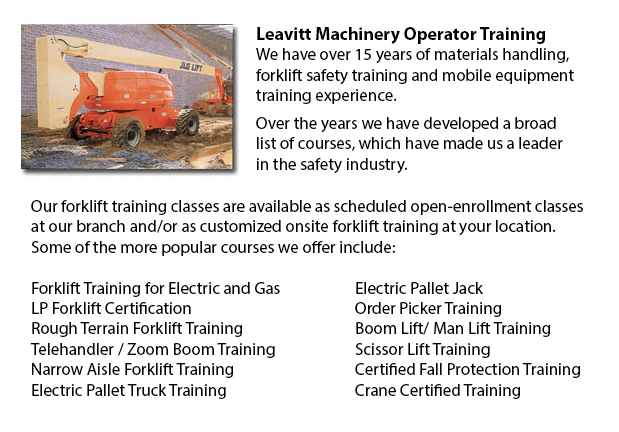
Guelph Boom Lift Safey Training - Boom lifts are a kind of aerial lifting device or elevated work platform that are normally used in warehousing, construction and industry. Boom lifts could be used in practically whatever environment because of their versatility.
The elevated work platform is used so as to enable access to heights that were otherwise inaccessible utilizing other methods. There are dangers inherent when utilizing a boom lift device. Employees who operate them need to be trained in the right operating procedures. Accident prevention is paramount.
The safety aspects which are included in boom lift operation are covered in our Boom Lift Training Programs. The course is suitable for individuals who operate self-propelled elevated work platforms and self-propelled boom supported elevated work platforms. Upon successfully completing the course, participants will be given a certificate by a person who is certified to verify finishing a hands-on evaluation.
Industry agencies, federal and local regulators, and lift manufacturers all play a part in providing information and establishing standards to help train operators in the safe utilization of elevated work platforms. The most important ways in preventing accidents associated to the utilization of elevated work platforms are the following: inspecting machines, putting on safety gear and performing site assessment.
Important safety considerations when operating Boom lifts:
Operators stay away from power line, observing the minimum safe approach distance (MSAD). Voltage could arc across the air to find an easy path to ground.
In order to maintain stability as the platform nears the ground, a telescopic boom must be retracted prior to lowering a work platform.
Personnel working from the platform of a Boom lift must tie off to guarantee their safety. lanyard and safety harness combinations should not be connected to any anchorage other than that provided by the manufacturer, never to other wires or poles. Tying off may or may not be required in scissor lifts, that depends on particular local regulations, employer guidelines or job risks.
The maximum slope will be specified by the manufacturer. Workers must avoid working on a slope, if possible. When the slope exceeds recommended conditions, the lifting device should be winched or transported over the slope. A grade can be easily measured by laying a straight edge or board of at least 3 feet on the slope. Then a carpenter's level could be laid on the straight edge and raising the end until it is level. The percent slope is attained by measuring the distance to the ground (the rise) and dividing the rise by the length of the straight edge. Next multiply by one hundred.
-
Guelph Warehouse Forklift Training Classes
Guelph Warehouse Forklift Training Classes - Warehouse training classes exist for the reason of raising awareness regarding common warehouse hazards. Students learn the important safety procedures that are necessary to warehouse safety. An emphasis i... More -
Guelph Forklift Operator Certification
Guelph Forklift Operator Certification - Certification for forklifts are needed to guarantee the safe use of forklifts for those employers in construction, industrial and warehouse settings. The training has to involve a method of education plus some... More -
Guelph Crane Training School
Guelph Crane Training School - The crane training school offers industry-relevant programs. Courses provide trainees with learning results that match current industry demands. Our small class sizes combine hands-on experience and theory. Our qualifie... More -
Guelph Heavy Equipment Training Programs
Guelph Heavy Equipment Training Programs - At whatever given construction site, there are usually various kinds of machines that are ready to be used. These heavy and light equipment need both operators to run them and mechanics to fix them. Apprenti... More -
Guelph Skid Steer Ticket
Guelph Skid Steer Ticket - On a skid-steer loader, the lift arms are at the side of the driver together with pivot points at the back of the driver's shoulders. This makes them different compared to a traditional front loader. Because of the operator... More -
Guelph Zoom Boom Ticket
Guelph Zoom Boom Ticket - Zoom Boom Training focuses on correctly training prospective operators on variable reach forklifts. The training goals include gaining the understanding of the equipments physics and to define the tasks of the operator. This... More -
Guelph Heavy Equipment Training
Guelph Heavy Equipment Training - Commonly, the different types of heavy equipment training are divided into 2 categories of machinery: those that have rubber tires and tracked vehicles. Tracked vehicles consist of items like for instance bulldozers,... More -
Guelph Aerial Lift Safety Training
Guelph Aerial Lift Safety Training - Each year, there are roughly 26 construction deaths due to the use of aerial lifts. Nearly all of the craftsmen killed are laborers, electrical workers, carpenters, painters or ironworkers. Nearly all deaths are c... More

Forklift Certification Guelph
TOLL FREE: 1-888-254-6157
Guelph, Ontario
forkliftcertificationguelph.com
Email Us
About Us


